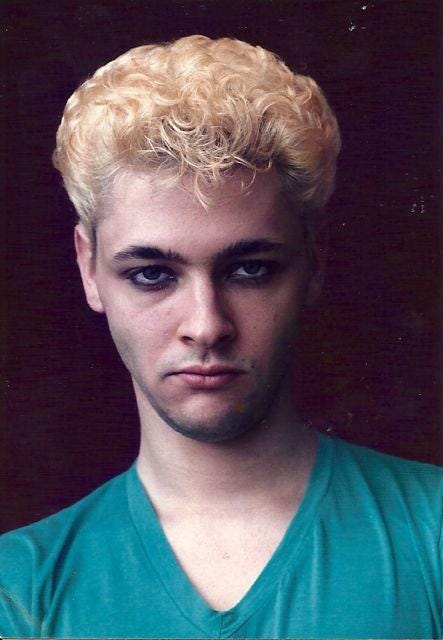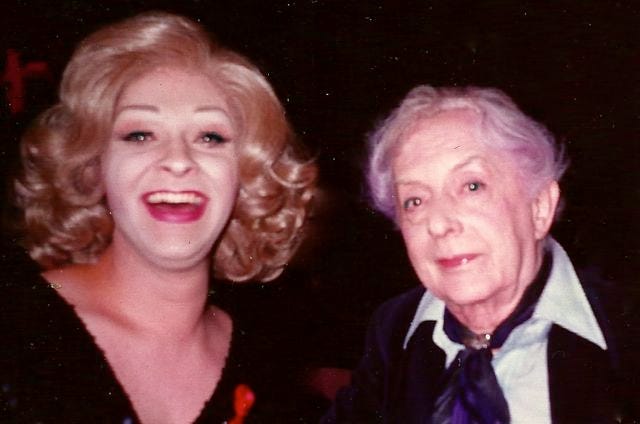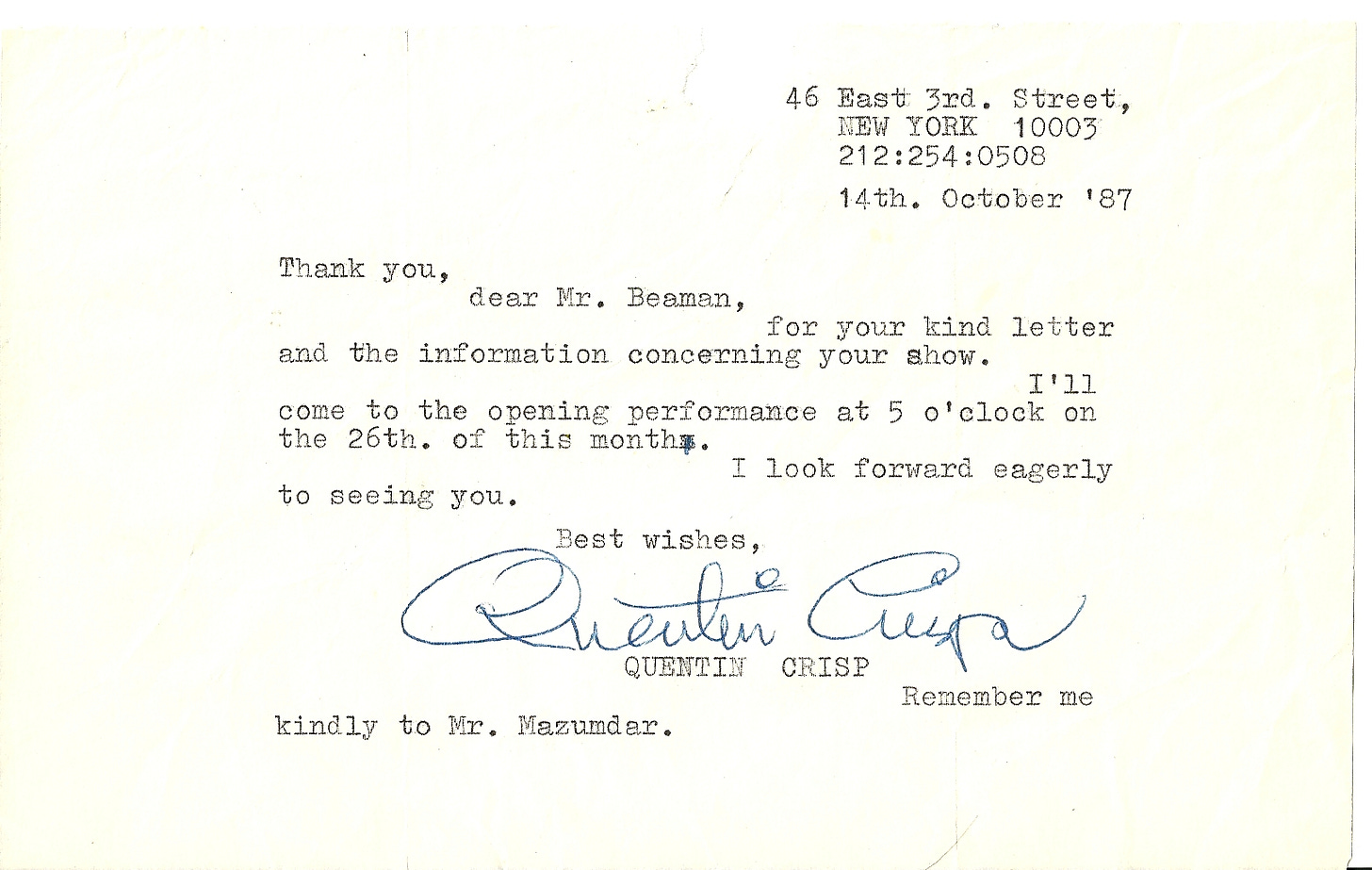This meme, and others like it, have been making the rounds on social media, and as one who was not only young in the 80s, but young and gay in the 80s, I’d like to offer a response to the sneering Zoomer who thinks they’ve pulled a “gotcha” here.
Trigger Warning: your beads are about to be read.
BITCH, PLEASE. We're not confused, dear. We're bored. With you.
The people pictured in this meme didn't whine. They didn't demand safe spaces. They didn’t lecture people about “social constructs” and police their pronouns. They didn’t claim victimhood.
THEY DID EPIC SHIT.
Look, I sympathize with you. I do. Bless your little heart. I was young once, and I understand. It feels good to call out your elders for being out of touch and clueless. It’s your job, really. It’s a rite, and a right, of passage. But it’s also inevitable that in the process, you will reveal your ignorance and lack of gratitude—gratitude to those upon whose padded shoulders you stand today. Yeah, I said it. Attention must be paid.
So, listen my children, and you shall hear—of the icons and divas of gender “queer…”
I came out in 1984. AIDS was decimating the gay community. The government was doing nothing. Being out was a risky political act. Closeted gay celebrities, like mini-series heart throb Richard Chamberlain (look him up on your Google machine, kids), with whom I toured in Monty Python’s Spamalot, were being outed; their careers destroyed. Talk about cancellation. I was training as an actor at an elite university theatre school and was being bullied by my teachers—some of them gay men. I was told if I couldn’t “butch it up” I would never have a career. I was defiant. In my senior year, playing a weird street kid in a truly terrible musical we workshopped, I, unannounced, bleached my hair blond, and in my big number, humped the floor and tweaked my nipples in front of the entire drama faculty.
Where did I find the chutzpah to do it? I learned my history. I read books—remember them? Books that opened my eyes to the heroes who walked the line before me—often in heels. The queens who put themselves in mortal danger to insist on their right to be different. I was inspired by the subversive power of clothes and mannerisms—how crossing the gender line challenged the status quo. Powerful icons like the ones in the above meme, and many others before them (Google true trailblazers like Sylvester, sweetie), whose self expression and refusal to conform, together with dazzling TALENT, made them mainstream stars.
I immersed myself in the vibrant club scene, where I joined with every kind of person to dance and discover the music—music that the rest of the world would be listening to months later, on the radio. Under those dazzling lights, to the rhythm of happy beats, I could express my gayness and belong. I truly wish that you young ‘uns could travel back in time with me and experience that culture… a time before cell phones and the internet, when we had to go out and find like-minded friends, lovers and fellow outsiders. The generation of gay people before me had created club culture: where DJs were gods and music was joy and you could be anyone you wanted to be.
I saw Grace Jones perform in nothing but heels and a necklace at 4AM while I rolled on ecstasy at The Saint. I boogied to Madonna at Sound Factory Bar, while the diva herself shared the booth with legendary DJ Junior Vasquez, who intoxicated us with his mix of her latest single. I saw visionary club promoter Suzanne Bartsch parading through Limelight with her entourage, a collection of spectacular and bizarre personalities known as The Club Kids. You wanna see genderqueer in all its glory? Google names like: Amanda Lapore, Richie Rich, Kabuki Starshine, Kevin Aviance, Candis Cayne and my beautiful and brilliant friend, DJ Lina Bradford. These divas never needed "allies." They had worshippers!
Of course, gender “queer” brilliance wasn’t created in the 70s and 80s. It’s always been with us, and I was lucky enough to have gotten to meet one of its pioneers, a one of a kind legend who referred to himself as one of “the stately homos of England.”
I mentioned in a previous post the devised theatre workshop I participated in recently with some talented trans and “queer” performers. One of them told the group as we were getting to know each other that he works as an artist’s model. I said, “Oh, wow, do you know Quentin Crisp and his autobiography The Naked Civil Servant?” He didn’t. Nor did anyone else in the room.
Quentin was an eccentric, witty, brilliant personality and raconteur who was out in London in the 1920s. He swished through the streets of the West End in broad daylight with bright hennaed hair, makeup and nail polish at a time when being gay was illegal and his very appearance could get him killed. He cobbled together an income as a part time artist’s model and sex worker, and despite beatings and arrests and all manner of assaults on his right to be who he was—he survived. He came to New York and became a fixture of the East Village gay arts scene. He wrote brilliant books and a column for the Village Voice.
I met him in the late 80s when I invited him to come to a performance I was giving in a blackbox basement somewhere. He graciously accepted, and sat in the front row with his lavender hair, wearing his signature slouch hat. When I became a drag performer in the 90s, I did a few AIDS benefits where Quentin was on the bill as well. He did a magnificent one man show which I saw twice, and he even played Queen Elizabeth I in Sally Potter’s hallucinatory film of Virginia Woolf’s Orlando, with Tilda Swinton. John Hurt won the British Academy Award for his portrayal of Quentin in the film of The Naked Civil Servant. Soft spoken, brilliantly funny and utterly unique, Quentin Crisp not only did epic shit, he WAS epic shit.
So, no, darling Zoomers, and pronoun activists of today: we’re not confused. We just wonder when you will stop screaming at us about how to address you, or boring us with regurgitated lectures about “social constructs” that even you don’t understand, and DO SOMETHING. Or MAKE SOMETHING. Or BE SOMETHING. Something a future kid like you can look at with pride. Something brave and dazzling that they can aspire to. Stop trying to make being different, and radical, and subversive, and outrageous into something mundane and banal—and safe.
I had the misfortune last summer of getting off a train at Penn Station right after a Harry Styles concert had let out at nearby Madison Square Garden. The station was packed with his fans—loud, giggling teenage girls wearing ratty pink feather boas, feverishly taking selfies. If your generation’s genderqueer icon is an ex-boy band twink in a dress…? You’re gonna have to step things up, gurl. Tough love, baby. SNAP.







As a straight kid of the 80’s and 90’s who dabbled in theatre for a bit, I very much appreciate this. This shit is old hat at this point. My contention, which you may or may not agree with, is that not only is the gender bending of the 70’s-90’s seemingly way more coherent than today’s version, it also didn’t deny sex realities. Gender was played with to a great extent, but it didn’t inform sex.
The severe vexation in society today I believe arises because of the incoherence, whingeing and screaming, and mandates, not because of something that has been done to death- and better- 1000 times before.
Well said, sister. I’m sick of halfwitted morons telling older generations they are out of touch. We had androgyne and gender-benders in the 1980s. We didn’t whine and complain about oppression. Nor did we demand to be accepted. We just were. Fabulously so.